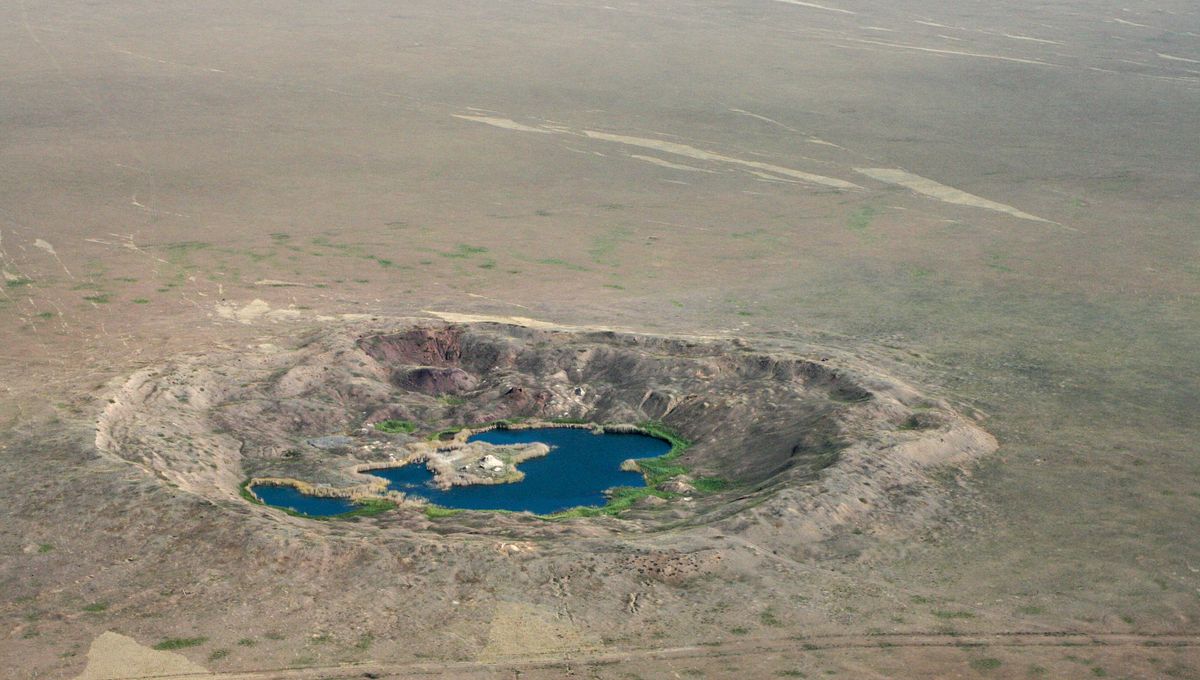
There is a lake in the northeastern part of Kazakhstan that serves as a true testament to the Cold War’s hazardous legacy. The lake, known as Lake Chagan, is situated in the sparse, rocky landscape near the city of Semey (formerly Semipalatinsk). To a casual viewer, the lake might appear unremarkable, but its other name offers a better insight into its true significance: the Atomic Lake.
In 1965, the Soviet Union conducted a nuclear test explosion that created a 100-meter (328-foot) deep, 400-meter (1,312-foot) wide crater where the lake sits today. The explosion itself was just one of hundreds of others conducted over four decades in the vast surrounding area that served as the Soviet Union’s primary nuclear testing ground.
The USSR’s first nuclear weapon was detonated at the Semipalatinsk Nuclear Test Site (otherwise known as “The Polygon”) on August 29, 1949. The bomb, known as RDS-1, not only represented a significant technological achievement for the Soviet Union, ushering them into the nuclear age, but it also signaled the true start of the nuclear arms race that characterized the Cold War by breaking America’s monopoly on the bomb. Over the next 40 years, the Soviet Union would carry out 456 nuclear tests at Semipalatinsk, 116 of which took place above ground, while 340 were conducted underground.
During its history, the Soviets tested a whole range of different weapon types at the site, including fission devices, as well as massive thermonuclear bombs.
One of the reasons why Semipalatinsk was so appealing to the Russians was due to its isolation and the ease with which it could be closed off from civilians. However, this did not mean the area was completely uninhabited. There were several villages on the outskirts of the site, and the city of Semey, which was only 150 kilometers (93 miles) away, had over 1 million people living there. As such, these people were still at risk from the radioactive material thrown into the atmosphere (nuclear fallout) produced by the above-ground tests – especially as the Soviet Union did not attempt to warn the surrounding population about the tests.
The general population was subsequently exposed to hazardous radioactive materials through both their contact with radioactive particles in the air, as well as the ingestion of contaminated food. Since the late 1980s, various studies have examined the potential effects this exposure has had on the people living in the area. There are now numerous datasets available in the literature on this subject, collectively indicating that the nuclear test significantly impacted the risk of various chronic diseases in the surrounding populations, including cancers, thyroid disease, immunological disorders, and congenital malformations.
Medical practitioners at Dispensary Number 4 in Semipalatinsk, as well as scientists from the Institute of Biophysics of the Academy of Medical Sciences of the USSR, carried out assessments of radiation exposure in 1958. Even then, they reported that 22 percent of observed individuals had symptoms related to chronic radiation sickness.
The hazardous legacy of the radiation has more than just physical health implications. Recent research has emphasized the traumatic psychological effects locals experience as they have stress and anxiety over the potential radiation effects on their health.
The Soviet Union carried out its last nuclear explosion at Semipalatinsk in 1989, and the site was finally closed after the Soviet Union collapsed and Kazakhstan declared its independence. Since then, the test site has become an important symbol of the dangers surrounding nuclear technologies and their impacts on health and the environment. Research into the people living in the area continues, especially as scientists seek to not only understand the long-term effects radiation can have on individuals, but also how it may impact future generations.
Source Link: Semipalatinsk: The Most Nuked Place On The Planet